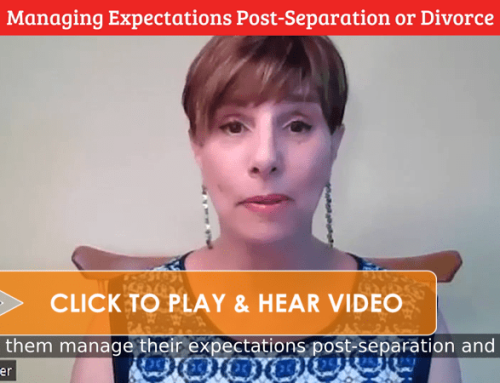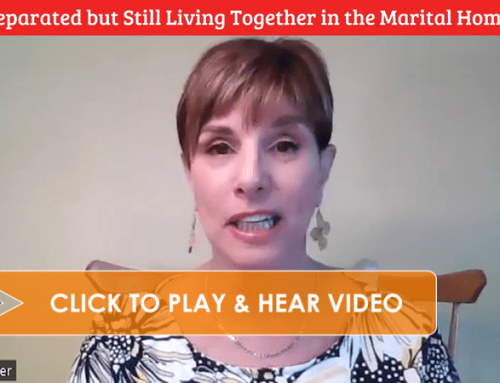 {4:30 minutes to read} In the preceding 3 articles, we have covered the subjects of retirement funding, comparing 401(k)s and IRAs, and dividing a 401(k) plan. As you will see, IRA plans almost never require a QDRO. However, many of them do have detailed paperwork which can look similar in scope to the language in a QDRO document. Typically, the plan will want to see a copy of the section of the Settlement Agreement (Separation Agreement) that spells out how the parties agreed to split the IRA along with their paperwork. It’s always wise to prepare the paperwork well in advance of the judgement of divorce as there can be a lag time with the paperwork.
{4:30 minutes to read} In the preceding 3 articles, we have covered the subjects of retirement funding, comparing 401(k)s and IRAs, and dividing a 401(k) plan. As you will see, IRA plans almost never require a QDRO. However, many of them do have detailed paperwork which can look similar in scope to the language in a QDRO document. Typically, the plan will want to see a copy of the section of the Settlement Agreement (Separation Agreement) that spells out how the parties agreed to split the IRA along with their paperwork. It’s always wise to prepare the paperwork well in advance of the judgement of divorce as there can be a lag time with the paperwork.
Divorce and 401(k)s and IRAs – Part 4
Sharing an IRA Plan Through Divorce
Using the same couple, Ellen and Jeff, let’s imagine that they both have IRAs in the same amounts listed above, (Ellen $30,000 and Jeff $70,000) and neither has a 401(k) plan. The math to calculate the sharing is the same; Ellen will receive $20,000. Here’s how the IRA sharing works:
- The distribution can only take place after a Judgment of Divorce.
- In virtually all cases, a QDRO is not needed to initiate the IRA distribution.
- The distribution commences upon the Authority of the Judgment of Divorce, usually within 30 days of the final divorce decree.
- Jeff would provide the divorce decree that indicates the distribution to the plan administrator. The funds would be transferred to Ellen’s IRA or Ellen can start a new IRA.
- If Ellen decides to take the $20,000 in cash instead of moving it into an IRA, she would also pay taxes and withdrawal penalties.
NOTE: If you have several old 401(k) plans from several previous employers, do not consolidate them into an IRA until after the divorce to preserve the option of taking penalty-free money.
Sharing a Roth IRA Through Divorce
Another type of individual retirement account is a Roth IRA. You fund these with money on which you have already paid income tax. When you are eligible to use the IRA’s funds (over age 59-1/2), you do not pay taxes on your withdrawals.
Using our same couple, Ellen and Jeff, let’s say Ellen’s $30,000 is in a Roth IRA, and Jeff’s $70,000 is in a pre-tax IRA account. That means Jeff’s account was built with money on which he paid no income taxes prior to putting it in the account.
When the amount in a Roth IRA is significant, then it is usually most equitable to split the Roth IRA separately from distributing the 401(k) funds. Sharing the funds in this manner eliminates the need to calculate the taxed versus pre-tax dollars. The Roth IRA does not require a QDRO; the 401(k) would require one even if Ellen and Jeff chose to equalize the accounts by sharing some of the 401(k). If they prefer to share the 401(k) funds, it requires equalizing the taxes between the accounts prior to the distribution.
Retirement Accounts and Divorce
There are strategies and creative options as to why parties agree to distribute funds from one to the other. For example, it is a good way to free up cash if it is needed to pay off marital debt or fund the down payment on a new home, especially if the receiver is the lower income party.
As you can see, this is a complicated financial situation. Your divorce mediator and financial professional can help both of you sort through it.
Divorce and Retirement Account Resources
“What Is a 401(k) Retirement Plan?”
“QDRO’s – An Overview and FAQs”
 BJ Mann
BJ Mann
Divorce • Family • Workplace Mediation
1121 Winton Road South
Rochester NY 14618
Office: 585.234.8740
Web Site: www.bjmediationservices.com
- Is the Child Support Statute in New York State Still Relevant Today? (video) - April 2, 2024
- Managing Expectations Post-Separation or Divorce (video) - March 6, 2024
- Maintenance and Child Support Re-Visited (video) - February 21, 2024






Leave A Comment